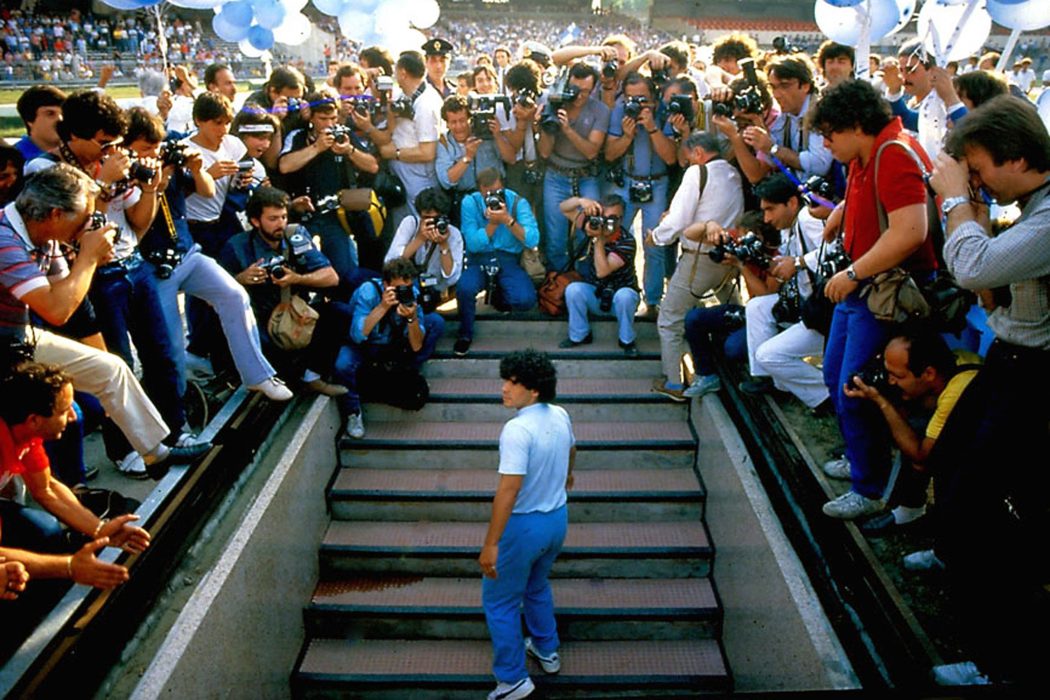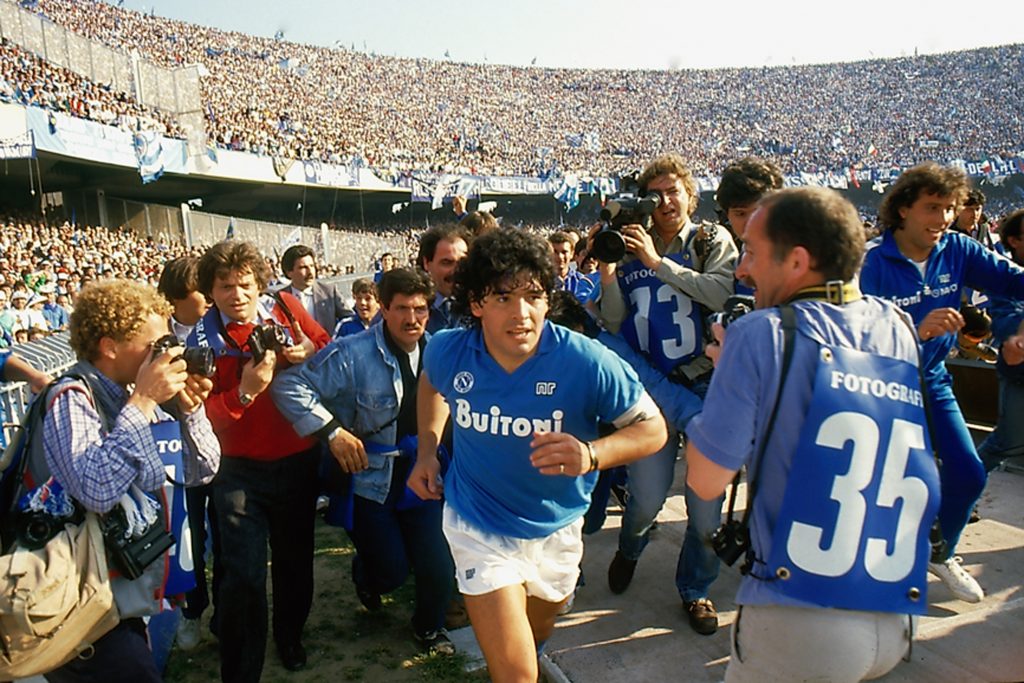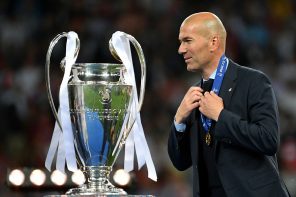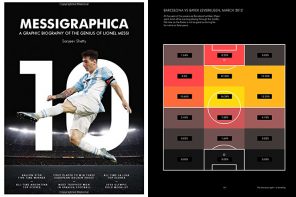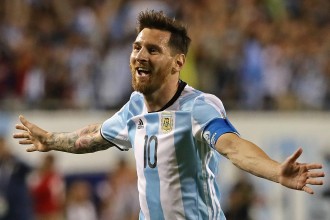Arguably the world’s greatest ever Number 10, Diego Maradona, finally gets the big screen treatment as a movie made from never-before-seen-footage recorded during the most iconic part of his career hits UK cinemas.
From the team that made the award winning docu-films Senna (on Formula One legend Ayrton Senna) and Amy (on the tragically gifted music star Amy Winehouse), ‘Diego Maradona’ was created from over 500 hours of unseen personal footage, filmed from 1981 right through his career in Naples.
Like the previous subjects of his films, Director Asif Kapadia felt Maradona was another perfect muse: one that transcends the art form, whose story reverberated globally and culturally. I spoke with Asif to discuss how he undertook the gargantuan task of creating the movie, the excitement of viewing unseen footage of Maradona at his peak, and how his meetings with football’s most infamous super-star turned out.
As a football fan you must have been massively aware of Diego Maradona, but how much did you know about him and his story, and with him being central to some of the most infamous events in the history of the sport, how difficult was it to put a fresh perspective on his story – I guess the existence of unseen footage helps in that sense?
Like most of my generation growing up in the UK I only really knew of his career in four-year international stages, when the World Cup would come along.
Probably my very first memory of really watching TV was watching the 1978 World Cup finals, but Maradona didn’t play in that. By 1982 I remember Diego had been billed as the best young player in the world, but he didn’t really do anything in the tournament. I think we all had an impression that Argentina were a team that fouled a lot, and of course, Maradona got sent-off due to an awful foul in the match versus Brazil. Growing up at that time everyone in my area wanted to be Zico, everyone wanted to be a Brazil player. It was peak Brazil, even though Italy ended up winning it.
1986 is when Diego leads this team that isn’t supposed to be great, and they win it and he’s amazing – probably the most famous instance of an individual leading a team to World Cup victory. No one had ever done it the way Maradona did it! And in 1990 I really don’t remember Argentina’s [infamous] semi-final against Italy, as the focus here [UK] was on England getting close to winning it.
So I didn’t really know what happened to him in between the international tournaments. This was way before podcasts, before Football Italia and the like was on TV. There was a bit of Transworld Sport that I used to watch but nobody really used to talk about foreign leagues in the mainstream. So, for me, making the film was about dealing with a player that we’ve all heard of, but from an era and area, Naples, that nobody’s really seen.
If you’re a Napoli fan in Italy there are lots of videos you can buy, but even the Neapolitans who have now seen the film say there is footage in it that they’ve never seen. Argentinians didn’t see any of this because it wasn’t on TV there either! I love the idea that there are people who’re really obsessed with Diego Maradona that haven’t seen this material. Then there are the people who don’t know that much, or the people in the UK who either love him or hate him because of what happened against England [in 1986].

There’s so much unseen footage, and it’s about the man as well as the player. And what’s interesting is the way he was on the pitch is also kind of like the way he was off it; he’s a tricky guy, you can’t quite get to him: Is he here? Is he there? That’s the kind of way he played! People tried to break his legs, they tried to foul him, but he’d just get back up, bounce back. That’s also the story of his life: every time you think he’s down and out he comes back again. He dies, then is born again, dies then born again. It’s this idea, of constant resurrection, is there throughout his life. Whenever you think Diego Maradona is out, he comes back and surprises you, and that’s the thing I really love about him.
How did you feel when you first heard about the existence of unseen, almost mythical footage taken from the time of Diego’s most successful period in his career?
When I first heard about it I saw a tiny amount, but my job really is to never be satisfied. So, whenever I see something, no matter how great it is, I’ll always think ‘OK, but is there more? What happened next? Where did it come from?’ To push my teams, the archive and research team, the producers for more. What happened before that? Who’s that person? Can we get more on them? But what I did feel is that I was seeing something amazing. You don’t know in the beginning if this is all going to be able to come together as a movie. A lot of the experiences during making a movie like this are a real challenge, a struggle at times. It’s at the end – only really now – when I show it to an audience and get a reaction and response, do I think it worked, that we’ve pulled it off.
Why does this footage exist? I’ve heard different accounts of why it was recorded…
It’s an amazing story really. Maradona’s first agent, Jorge Cyterszpiler, is a legend and probably the world’s first ‘super’ agent. He got Diego his first contract with Argentinos Juniors, the deal with Boca Juniors, a deal with Puma, a deal with Coca-Cola, the biggest deal ever [at the time] with Barcelona, then broke that deal to get him to Naples. This guy done some of the biggest deals of all-time and he had one client: Maradona.
He’s a legend in terms of being an agent, but he also had the foresight in 1981-82, before he went to Barcelona, to say ‘this kid is so special that there should be a movie about Diego Mardona’. He hired two cameramen and filmed him because he thought he could be huge in America and around the world, and that greater sponsorship deals would follow. So he hired the Argentinian cameramen to follow Diego around, filming him on the pitch, off the pitch, wherever Diego goes because he thinks one day he’ll be able to put it all together to make a movie.
Now I’ve seen a really early version of what they put together – almost like a highlights clip, like something you would now find on YouTube – and it’s far from great. But he had the foresight to get people to film Diego. The tapes were then locked away in Naples, and half were found in Buenos Aires. In 1981 they started to film and I finished it in 2019 with the crew.
I love the idea that there’s lost archives and footage spread around the world, that’s been locked away for decades then found – like treasure!
Isn’t that amazing? It’s only possible because of the old fashioned analogue format – an actual physical tape which someone kept in a cupboard that I could get from them. We had to buy the machines which could play the tapes on Ebay as they don’t exist anymore! You put the tape in and it still works 30 years later. Today with digital devices if you lose the charger it’s lost! If a drive fails, that’s it! But at that time, in 1981, U-matic was considered a serious format, so when I went to interview Claudia Villafañe, Diego’s ex-wife, in Argentina she had lots of material which nobody has ever had access to. Some of this is used in the film but there was so much that we didn’t use in the end, we just wanted to make copies for her in case these 30-year old tapes got damaged, as it’s history!
In films, football often proves difficult to recreate with a natural look and feel, with moves, goals and pieces of skill often being hugely outlandish and unauthentic. Obviously, this is created from real-life footage…
Football always looks terrible in movies! If you can act you can’t play football and if you can play football you probably can’t act! It feels unreal because generally nobody can clear all of the sponsors, so there are fake kits, and the fans never look believable. I’ve not seen a good one yet. But it’s hard. It’s hard to dramatize 22 players and a referee on a pitch, it’s not easy to have 15-30,000 fans there. The camera position’s unnatural – if its running in the middle of the pitch with the players that feels weird! There’s a whole set of rules that are subconscious. If you’re a fan you can tell within two seconds that it’s fake.
The thing with this is that it’s all real, everything you see happened. The fact the camera work isn’t perfect sometimes is because it’s real: it’s a guy with an old, handheld, massive camera chasing round after Diego Maradona. The fouls, the tackles, the pitches, the ball, the way the net bulges, the sound effects…when you see the film I hope you will say you’ve never seen football shown on the big screen in the cinema like this before.
Were there any bits in the footage which made your jaw drop when viewing for the first time? What Diego could produce on the pitch also often seemed unnatural!
Diego’s incredible, one of the best players ever, but for me, my favourite moments are when he is just messing around with the ball in training or during a warm-up. He was always doing keepy-ups, just messing with the ball, playing with it like it was his pet dog – he’d send it off and it would come back to him, he’d send it off again and it would come back. But during all of this he had a very particular thing: he’d always have his shoelaces undone. He never did them up! I don’t know whether this was a balance thing, or whether he was letting his feet rest.
There’s also one particular moment early on in the film when you have him doing keepy-ups – but he’s doing them with his heel! Now I’ve seen a lot of great players, but I’ve never seen one doing keepy-ups, for as long as he wanted, on the back of his heel! Then he’d just send the ball up to his head, then keep it up with his shoulder for 20 minutes. So for me, the joy of Diego Maradona is just him enjoying what is essentially his best friend in life: the ball. That’s when he seemed happiest.
Do you think that the type of player Maradona was – being a number 10 – adds to the intrigue of his story, the footage and film you could produce?
The one country that never really had Number 10s was England. You’d hear about this concept in other countries, but here in England it was a shirt usually given to strikers as we never really had a playmaker, or specifically that concept. In the film there is a particular moment when I ask Diego about it and he explains for him what the concept of a 10 is. Because of him many now realise it’s a thing; for Argentina, for Brazil, these players are some of the greatest ones of all-time.
Infamously, Diego wasn’t happy with Jimmy Burns’ book regarding his life. How important was it to get his cooperation with the film and to add his narrative to it, and was there any hint of editorial control or a particular narrative which he or his camp wanted to influence at any point?
I read Jimmy’s book a long time ago when I was a student and thought it was great. In fact I finished it thinking how great it would be to make something on Diego Maradona one day, just thinking about the life that he’d led. I’ve met Jimmy and know he really researched that, went to Argentina to find Maradona. If you’re producing books or films about people, if you’re going to do an honest piece of work, sometimes you’re going to upset people. If everyone’s really happy with everything you’ve done when you’re finished then you probably haven’t dug deep enough.
![]() Diego’s a tough guy to connect with, and to meet – a tough person in general, as people are afraid of him; they don’t want to upset him! Getting the footage wasn’t simple. My producers did a brilliant job of accessing the material but it’s worthless unless you’ve got Diego’s image rights, so the biggest thing they had to do was to do a deal with his lawyer so we could actually use the footage. That took quite a long time. Once that was achieved, we knew he had a very dramatic life story, so the challenge became deciding on which part of his life to focus. There are stories that you’ve just heard about and then there are the stories that we have footage of, so my idea is always generally to go with what you can show and visualise – after all, it’s going to be a movie in the end.
Diego’s a tough guy to connect with, and to meet – a tough person in general, as people are afraid of him; they don’t want to upset him! Getting the footage wasn’t simple. My producers did a brilliant job of accessing the material but it’s worthless unless you’ve got Diego’s image rights, so the biggest thing they had to do was to do a deal with his lawyer so we could actually use the footage. That took quite a long time. Once that was achieved, we knew he had a very dramatic life story, so the challenge became deciding on which part of his life to focus. There are stories that you’ve just heard about and then there are the stories that we have footage of, so my idea is always generally to go with what you can show and visualise – after all, it’s going to be a movie in the end.
To make these films – this, Senna, Amy – we can only make them if the person or estate of the person is on board otherwise I can’t really use their image or material. With Ayrton Senna I can’t really make it without showing him in Formula One, and if I don’t have his image rights, I can’t show him. I can’t make a film about a singer – Amy Winehouse – and not have the music, so I need the estate and the music publishers. For Maradona I need him on board, but this doesn’t mean I’m making a film under approval – it just means they’ve let me make the film. Once agreed they leave me alone and I make the film I want to make. So we had the involvement of Diego Maradona [and team], but they didn’t have any approval on the project.
How were your face-to-face interviews with Diego planned/constructed? Did you build specific questions around the footage you had already obtained, did you plan a standard set of questions from a storyboard already in place, or did you just want to try and have as natural a conversation as possible regarding his life and career?
I have a particular style of making films which is called Absolutely No Plan At All! What I do is look at a lot of the footage then think about it, have it all going around in my head. Then I go and meet him. It then depends on which stage of the process I’m at for this, as I met him four or five times over the years. The first time was a bit of a disastrous meeting because we just couldn’t get to talk to him, whilst spending five days waiting. At this point I decided I’m not going to work like this, I’m just going to go off and make the film a bit like Senna and Amy, and at some point I’ll talk to him. So it was going to be like I was making a film with him not around. The second time I met him was much better. We talked, I went to his home which was much quieter and he was watching Boca Juniors on TV.
Funnily enough his attention span would last for around 90 minutes! When he was ready he’d turn up, often in the afternoon – as you’d never have an early start as he stays up late, wakes up really late – get himself a coffee and we’d chat. There’d then be moments when he’d be getting really engaged in the conversation and I’d be broaching some of the more difficult questions and there would be a definite noticeable drop-off in energy after about 90 minutes. Now I’m not used to ending an interview myself, I’m used to talking for hours and hours: 5-6 hours isn’t unusual for me, but with Diego I’d be the one ending it and asking to come back because you could just see his energy levels and interest had gone.
He doesn’t really suffer fools, he’s not a fan of waiting for questions and answers to be translated. When he answers he doesn’t want to wait for the translation so it was an interesting process and once I’d cracked it I thought we’d got some really great stuff. When you watch the film, every time you hear Diego’s voice, that’s been taken from my interviews with him.
Did you have a kick-about with Diego?
I did! Though I have the feeling that, in my mind it was a kick-about, in his mind, some strange guy passed him the ball and he passed it back a couple of times and that was it. But for me, I’ve played football with Diego Maradona, I don’t care what anyone says!
I’ve heard a rumour that you wanted to touch his left foot when you met – is that right and if so what’s the story?
It’s a funny story! When we were doing the first interview I was recording it myself and had the microphone on the table, but I had to sit next to it because Diego kept answering off-mic. So I thought if I sat on the floor next to the mic, he’ll talk to me and into the mic. But then I found myself slightly losing concentration and looking at his legs! I was sat right in front of him and he always wears shorts, and has massive legs with those amazing thighs! I’m looking at them and thinking ‘That’s Diego Maradona’s legs!’ Then I start looking down to his foot. ‘That’s his foot! That’s Diego Maradona’s left foot!’ At this point I’m not even listening to anything he’s saying, I’m just thinking ‘I wonder if he would mind if I touched his left foot?’ Now I’ve met a lot of famous people in my life, a lot of actors and movie stars but I’ve never had an urge to try and touch someone as much as I wanted to touch Diego’s left foot!
The honest truth is I did it. My next question was totally irrelevant to what he’d just answered, I just randomly said “Is this the foot that he broke?” and grabbed his left ankle! He doesn’t like being touched and so pushed me off and it was all a little awkward…but I did touch Diego Maradona’s left foot.
Finally, do you have Diego’s phone number?
Sure, I’ll tell you his number: it’s 10!
The superb Diego Maradona is in cinemas from 14th June.

